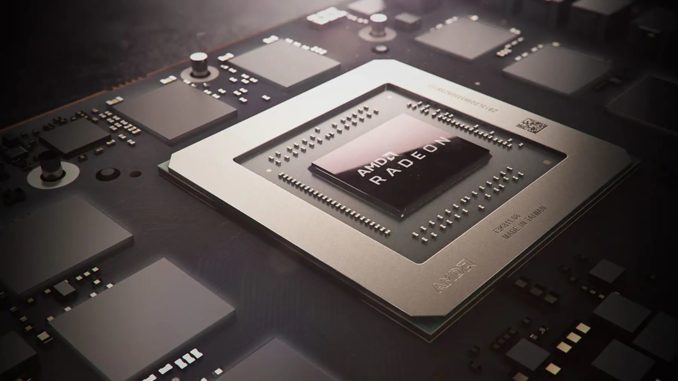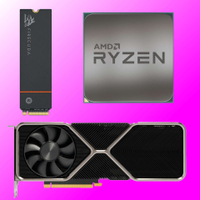Latest RDNA 3 rumors dial back on the excitement a little
Early estimates were likely too ambitious.

Next-gen GPU rumours are surfacing just about every day now. But most of them have been regarding Nvidia's next-gen cards, such as their speculated increases in power consumption and that they have entered the testing phase. Well, the high-end AD102 GPU anyway.
News regarding AMD's next-generation RDNA3 cards has been less forthcoming. We know that the high-end GPUs in the range will be chiplet-based designs but there's little concrete information other than that. Leaker extraordinaire Greymon55 is reporting that the internal specs of RDNA3 GPUs are different from earlier leaks. The new rumours indicate that the shader counts of the GPUs will be less than previously expected.
The flagship Navi 31 card, likely to be known as the RX 7900 XT, was previously rumoured to have 15,360 stream processors and approach 100 TFLOPS. This new leak suggests that 12,228 shaders is now likely. This means 100 TFLOPS is all but impossible unless the card comes with a very high clock or AMD really has pulled some internal wizardry to boost compute performance.
The Navi 32 GPU is expected to end up inside cards carrying the RX 7700 and 7700 XT names. It's expected to come with 8192 shaders while the Navi 33 or RX 7600 series should contain 4096. It's important to remember that the current AMD flagship, the RX 6900 XT comes with 5120 shaders, so these new cards are expected to be very powerful, though of course we don't know how all of this raw shader power will translate into game performance.
AMD Navi III (RDNA 3)Navi 31: 12288 SPs, 48 WGPs, 12 SAs, 6 SEsNavi 32: 8192 SPs, 32 WGPs, 8 SAs, 4 SEsNavi 33: 4096 SPs, 16 WGPs, 4 SAs, 2 SEs https://t.co/h46ytpdifoMay 2, 2022
The high-end RDNA3 cards are looking like game changers for the GPU industry. The use of chiplets isn't new. AMD already produces multi-chip-module (MCM) CPUs, and it has also released an MCM compute GPU . It gives an idea of what to expect, but MCM designs for consumer graphics cards are a big step forward.
We're still months away from the launch of AMD's new GPUs, so specifications can always change. Yields may determine final die configurations. AMD may be able to use fully enabled dies, or it may have to fuse off areas to maximise its supply of useable dies. Perhaps these latest leaks relate to this necessity? Perhaps not.
It's likely that the design phase is essentially completed, the GPUs are working and they're in testing, with PCB and cooling designs and particularly driver development making up a large part of the remaining work.
Keep up to date with the most important stories and the best deals, as picked by the PC Gamer team.
RDNA3 graphics cards are expected to launch sometime in the second half of 2022. It's hard to believe that it's already May, so this release and that of Nvidia's competing RTX 40 series will come quickly.
Best CPU for gaming: Top chips from Intel and AMD
Best gaming motherboard: The right boards
Best graphics card: Your perfect pixel-pusher awaits Best SSD for gaming: Get into the game first

Chris' gaming experiences go back to the mid-nineties when he conned his parents into buying an 'educational PC' that was conveniently overpowered to play Doom and Tie Fighter. He developed a love of extreme overclocking that destroyed his savings despite the cheaper hardware on offer via his job at a PC store. To afford more LN2 he began moonlighting as a reviewer for VR-Zone before jumping the fence to work for MSI Australia. Since then, he's gone back to journalism, enthusiastically reviewing the latest and greatest components for PC & Tech Authority, PC Powerplay and currently Australian Personal Computer magazine and PC Gamer. Chris still puts far too many hours into Borderlands 3, always striving to become a more efficient killer.


